Author, columnist and film and television critic Luke Buckmaster examines the enduring themes of Wake in Fright, first released in 1971.
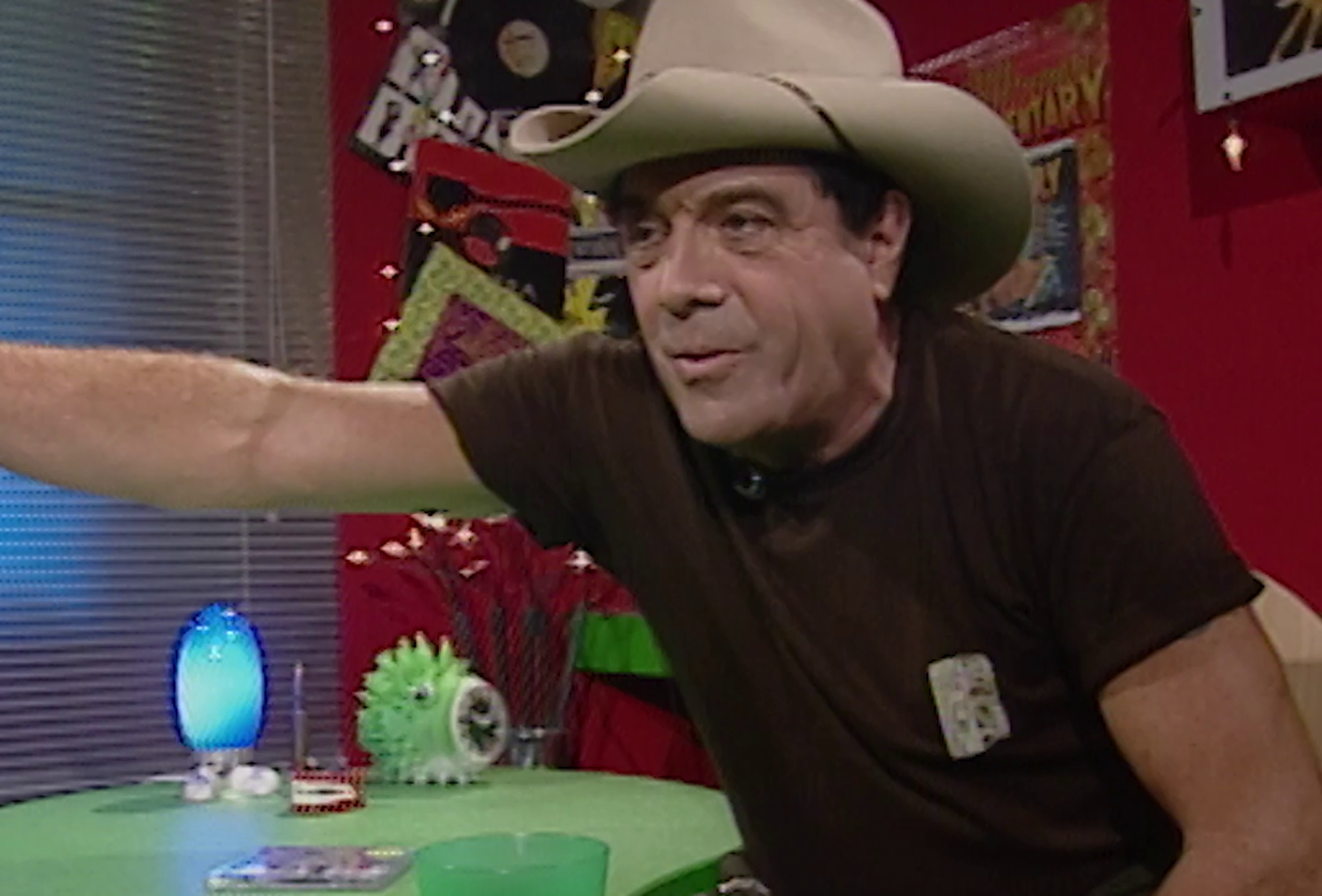
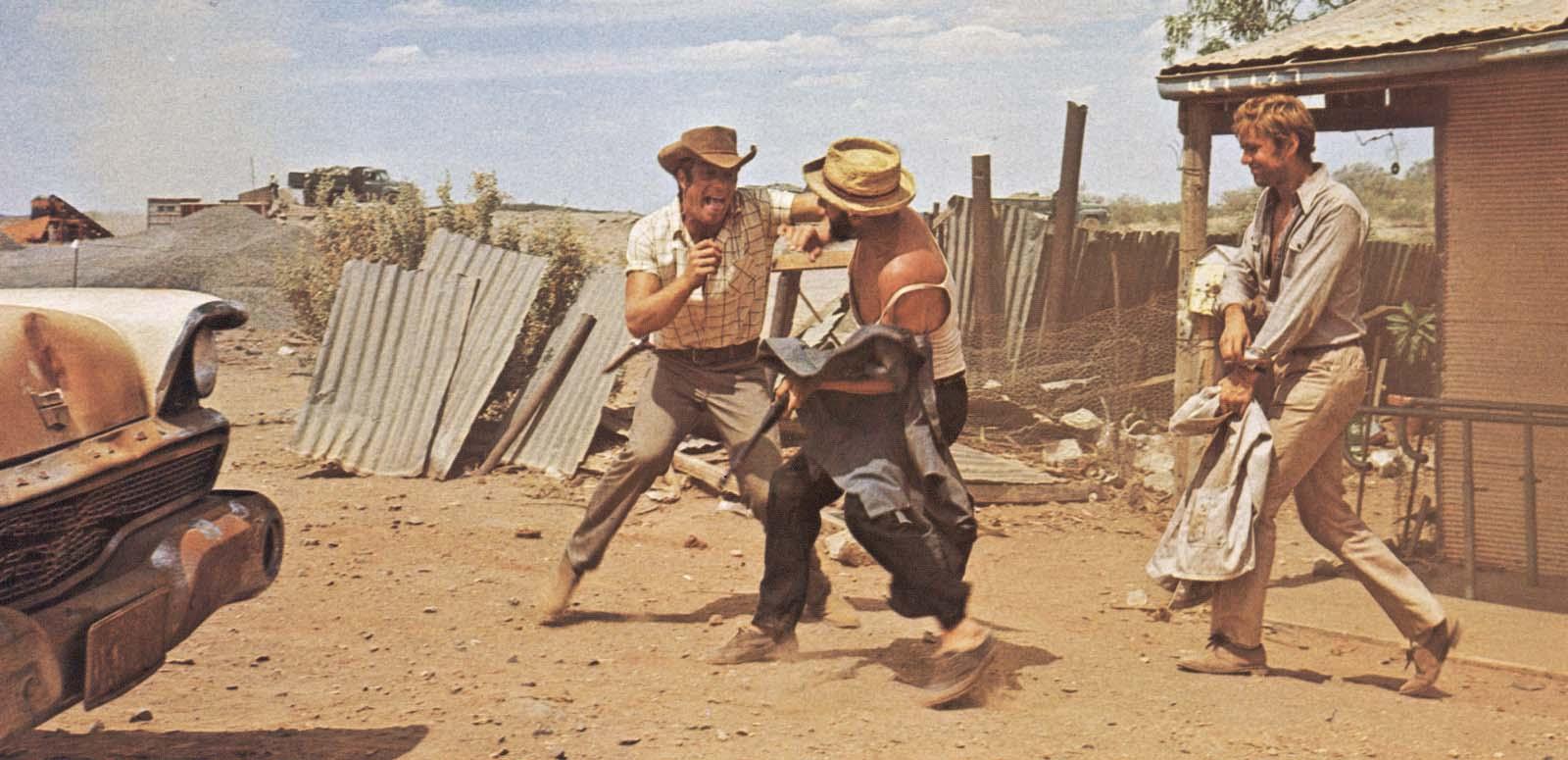
Author, columnist and film and television critic Luke Buckmaster examines the enduring themes of Wake in Fright, first released in 1971.
Remember that old episode of The Simpsons, when Marge attempts to order a coffee at an Australian pub but the bloke behind the counter only understands one word: beer? That same absurd situation - deriving tension from a foreigner clashing with Antipodean culture - is played for psychological horror rather than laughs in Ted Kotcheff's 1971 classic, Wake in Fright.

Turning 50 this year, it is still an astonishingly brilliant film with a burning, feverish energy, ranking among the most intensely impressive works of art ever made in this country. Every time I watch it I end up bug-eyed and shaken like a leaf.
Long considered lost and famously found by the film's editor, Anthony Buckley, in Pittsburgh in a box marked 'for destruction', the film came dangerously close to disappearing forever but was rescued, restored and re-released.
Adapting Kenneth Cook’s lithe and pacy novel of the same name, the narrative follows a well-educated teacher from England, John Grant (Gary Bond), who works at a tiny school in Woop Woop and dreams of getting the hell out of there. The opening shot captures the arid outback where the school is situated by performing a complete rotation, gazing in all directions – like somebody turning their head in a 360 video.
US trailer for Wake in Fright (released as Outback outside Australia), 1971. NFSA title: 18414
John Grant believes he has an opportunity to break free when he wins big at a game of two-up, only to keep playing and lose everything – becoming a penniless prisoner of a small town called Bundanyabba, aka 'the Yabba'. There he is attacked, in a manner of speaking, by the sun, the booze and the aggressive hospitality of the locals, who insist that he 'come, have a beer!' and 'she’ll be right mate, drink up!'. After many many beers, and a lot of sun, and a great deal of hospitality, John becomes rather ... unstuck. Fried like a crisp inside and out, the teacher’s Australian experience takes him to despair and ultimately suicidal behaviour.
Gambling, alcoholism and toxic masculinity – all core pillars of a good old Aussie weekend, mate! – are among the film's key themes. Another important aspect of it explores a divide in Australian culture and identity that has never been resolved since Wake in Fright first arrived half a century ago. And, in fact, may be worse and deeper than ever: the gap between rural and urban Australia, including the philosophical differences (real and imagined) between big city and small-town people.
Early in the film, local cop Jock (played by the great Chips Rafferty in his final film performance) sidles up to John and engages him with beers, a meal and a chinwag. He senses the teacher's disdain for small-town life and presents the reverse disdain back.
Wake in Fright (excerpt), 1971. NFSA title: 782560
Maintaining a kind of forced congeniality, Jock comes close to articulating his true feelings when he says, 'You clever blokes never like stopping in one place for too long, do you?'. Away from the cop, in conversation with one of the few highly educated people in town (an alcoholic doctor played by Donald Pleasence), John reveals his true feelings, complaining about 'the arrogance of stupid people insisting you should be as stupid as they are'.
To put it in binary political terms: Jock is the kind of bloke who votes for the Nationals or Liberals, and John (if he became an Australian citizen) would vote Labor or the Greens. But the tension between them is more than that: a clash of values and worldviews; a different approach to ideas around community and belonging; a contempt for each other’s perspective; a perhaps irreconcilable animosity. The deep political divide between urban and rural people is not uniquely Australian, and just as pronounced in America.
It’s a tension that can easily be exploited and exacerbated by political leaders, drawing to the surface the animosity bubbling away between rural and urban Australia; between the Johns and the Jocks. If one considers Wake in Fright as a metaphor about this divide, John’s journey into suicidal ideation takes on new meaning, becoming a grim message about how this divide can never be reconciled.
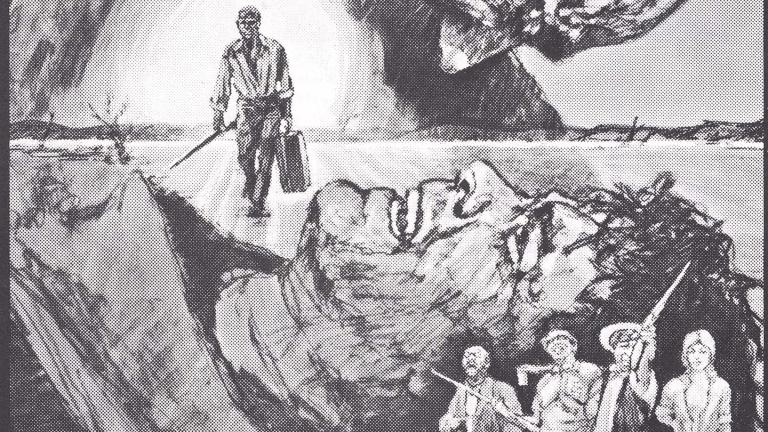
Excerpt from a bi-fold press sheet for Wake in Fright (AKA Outback), 1971. NFSA title: 635094. The artist has cleverly drawn the faces as if they are part of the landscape itself, effectively reflecting how the arid Australian outback transforms and consumes those who live in it. Click image to open
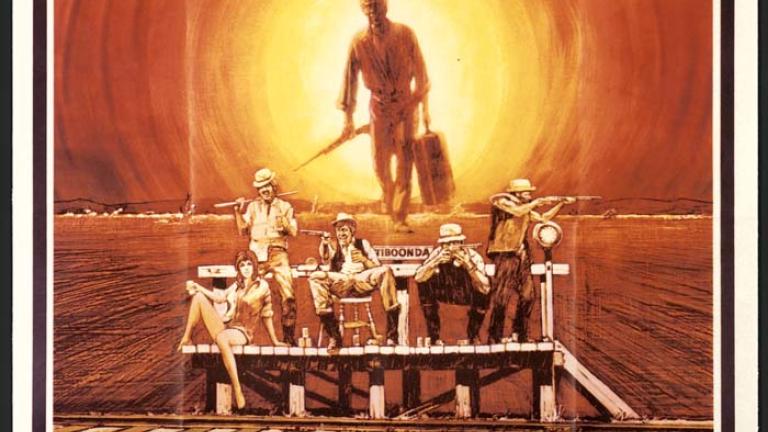
Australian one-sheet poster for the original release of Wake in Fright, 1971. Courtesy: Wake in Fright Trust. NFSA title: 399519. Cast in orange tones with a rabble of people in the foreground, it is a striking example of cinema poster design. Click image to open
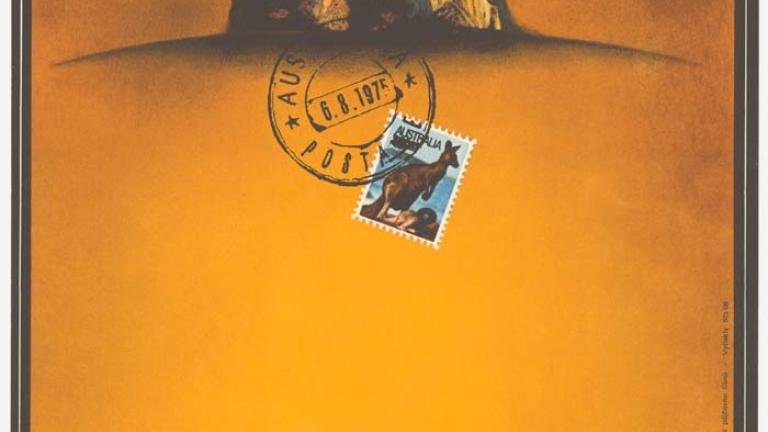
Wake in Fright (Czech poster), 1975. NFSA title:1098479. The starkness and foreboding of the landscape is well rendered in this poster but ultimately says little about the film itself.
Click image to open
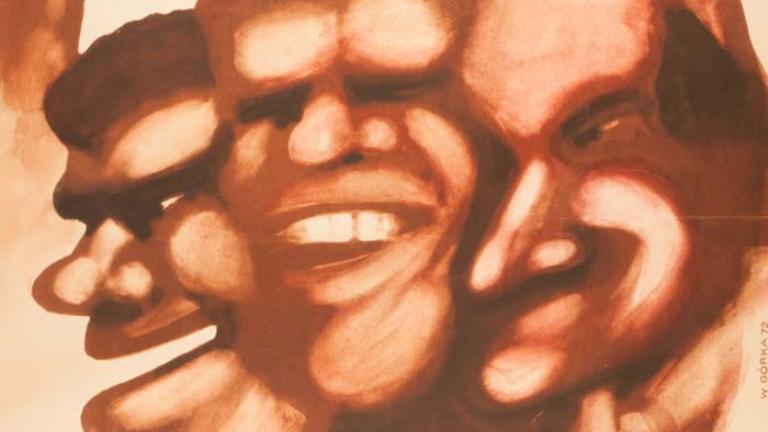
Wake in Fright (Polish poster), 1971. NFSA title: 752327. This poster masterfully captures the terror depicted in this outback tale, illustrating the grotesque faces of men inciting alcohol-fuelled violence.
Click image to open
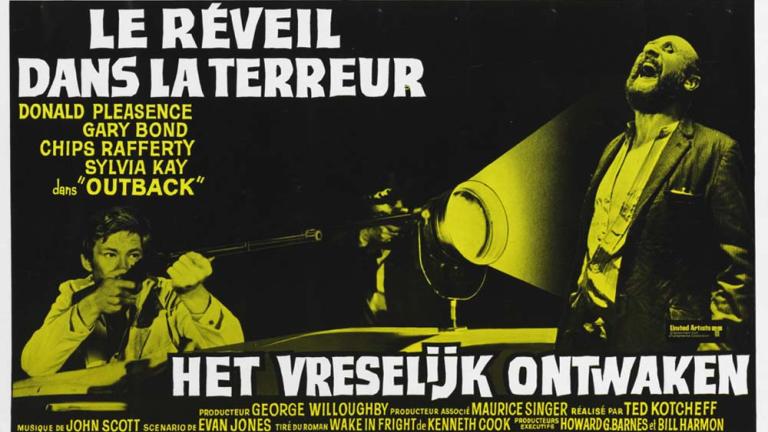
Wake in Fright (Belgian poster), 1971. NFSA title: 1289343. Using a stark three-colour scheme and a brutal font, this poster effectively captures the all-pervading tension of the film.
Click image to open
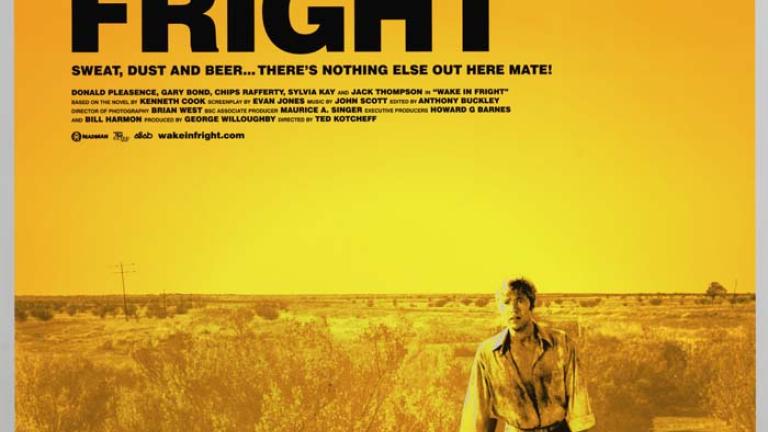
Wake in Fright (Australian poster), 2009. NFSA title: 791215. The burnt orange, arid landscape and the bedraggled lonely figure of Grant with gun and suitcase, summarises the central mood and plot of the film.
Click image to open
There are, however, many ways into it; many prisms through which to view it. Wake in Fright is complex, prickly, shocking, weird, surreal. It's a study of contrasting values, worldviews, masculinity and more – and also an atmospheric shock to the senses that works very well as a genre film. It can even be interpreted as a peculiar thriller in which the villain is everyone and no-one, and everywhere and nowhere.
The tagline accompanying its DVD and advertising materials reads: 'Sweat, dust and beer ... there’s nothing else out here mate!' Maybe that's true of the locations it depicts – but there's a hell of a lot under the bonnet. Every time I watch the film I come away with something different.
Luke Buckmaster is the film and TV critic for The Guardian Australia and Flicks.com.au, and a monthly columnist for NME Australia. He was the co-host of ABC iView's TV show, The Critics, which ran for two seasons, and wrote a biography on the filmmaker George Miller titled Miller and Max: George Miller and the Making of a Film Legend. He has been writing about film and television since 1997.
Explore the Wake in Fright curated collection to see more materials relating to the film's original release in 1971 and its NFSA restoration and 2009 re-release.
The National Film and Sound Archive of Australia acknowledges Australia’s Aboriginal and Torres Strait Islander peoples as the Traditional Custodians of the land on which we work and live and gives respect to their Elders both past and present.